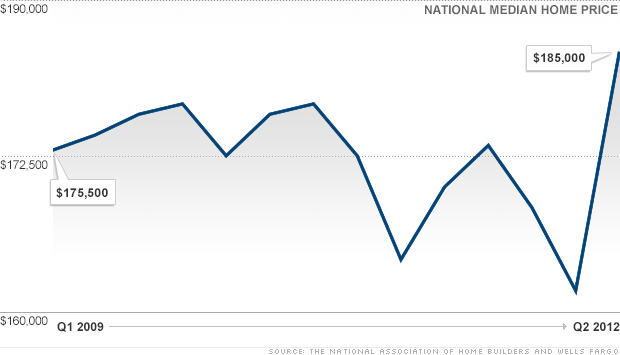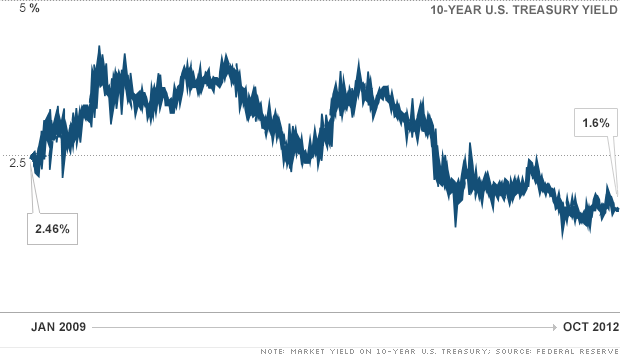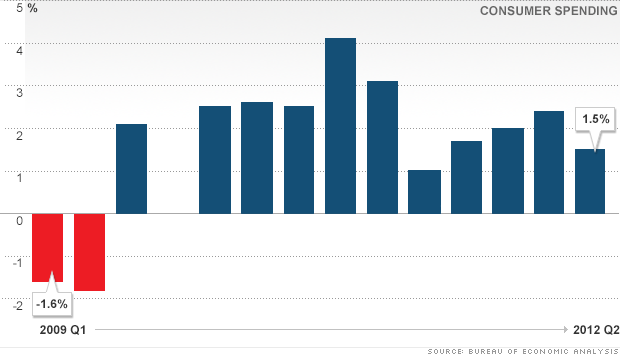Obama's economy: A snapshot
When the president entered office on Jan. 20, 2009, the economy was issue No. 1. It still is today. Here's a look at where the economy stood then and what's changed since.

Job losses peaked in early 2009, and steadily declined throughout the year. The economy finally started creating jobs in the beginning of 2010, but then employers pulled back in the summer. A similar trend occurred in 2011, and then again in 2012, when strong momentum early in the year stumbled in the spring.

The unemployment rate surged to 10% in Obama's first year in office and has fallen gradually since then, landing at 8.2% as of June. Part of the decline has come as some Americans have gone back to work, but also because many workers have dropped out of the labor force.

During the first three months of 2009, the economy slumped at an annual rate of 6.7%. Since then GDP has been growing and slowly recovering, but the rebound has been a lackluster one compared to those following prior recessions.

Home prices have moved up and down since the start of Obama's term. Lifted in 2010 on the back of the Recovery Act's homebuyer tax credit, prices later fell when the credit expired. But overall, the trend has been lower, and housing remains in a major slump.

More than 3 million Americans have lost their homes to foreclosure since early 2009, but bank repossessions have fallen in half since they peaked in September 2010.

Gas and food prices have had a few temporary growth spurts in the past few years, but overall, inflation has remained relatively low, held back by falling home prices and stagnant wages.

After bottoming out in 2009, stocks came roaring back over the next several years. But after starting 2012 with the best quarter in years, the European debt crisis and a slowing U.S. economy spooked investors, putting CNNMoney's Fear & Greed index in extreme fear territory. Experts still predict the S&P 500 will end 2012 on a high note. Most strategists surveyed by CNNMoney think the broad index will end the year up 14% from where it started.

Already-low interest rates rose steadily in 2009 as the economy slowly began to recover, with the yield on the benchmark 10-year note hitting 4.01% in the spring of 2010. But since then, extreme fear has settled in, sending investors fleeing for the safety of government-backed U.S. Treasuries, sending 10-year yields tumbling to all-time lows.

Manufacturing slowed through much of 2009, bottoming out midway through the year. Since then, the sector has steadily rebounded, with industrial production hitting a nearly four-year high in April

Amid slumping home prices and rising unemployment, consumers pulled back on their spending during the recession. Stimulus programs temporarily boosted auto sales and home purchases in 2009, but since then, spending has picked up only gradually. Consumers are focusing on paying down debt instead.
Sounds about right .





















